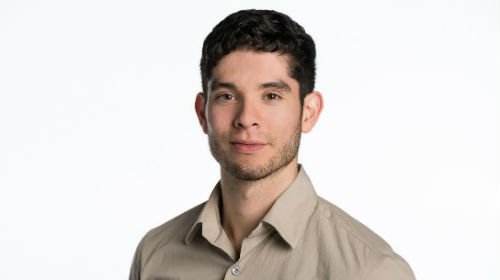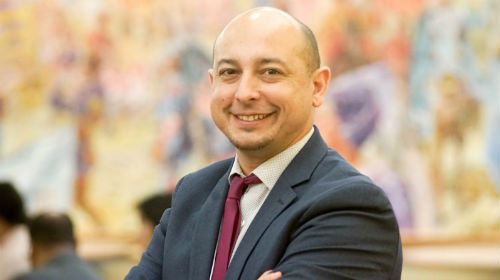
Cookies in use
HRC Recognizes National Latinx AIDS Awareness Day
by HRC Staff •
To mark National Latinx AIDS Awareness Day, we recognize some key Latinx LGBTQ community leaders and advocates who work tirelessly on behalf of individuals living with and affected by HIV & AIDS throughout the country.
Post submitted by Peter Cruz, Associate Director of the HIV and Health Equity Program
The Centers for Disease Control and Prevention (CDC) recently issued a statement confirming that HIV-positive individuals who take antiretroviral therapy (ART) daily as prescribed and maintain an undetectable viral load have effectively no risk of sexually transmitting HIV to their partners.
However, the CDC also noted an alarming trend -- that HIV “diagnoses increased among Hispanic/Latino gay and bisexual men from 2010 to 2014.” And in 2015, Hispanics/Latinos accounted for approximately 25 percent of all new HIV diagnoses in the U.S. These sobering statistics highlight the need for more client-centered HIV programs and services that are culturally and linguistically appropriate for the Latinx community.
To mark National Latinx AIDS Awareness Day, we recognize some key Latinx LGBTQ community leaders and advocates who work tirelessly on behalf of individuals living with and affected by HIV & AIDS throughout the country.

William Campillo Terrazas, Center for Artistic Revolution, Little Rock, Arkansas (HRC HIV 360° Fellow)
“In 2015, the CDC stated that 50 percent of new HIV infections occur in Southern states. In the state of Arkansas, I observed how Spanish-speaking patients faced significant challenges due to language barriers. As a result, these patients were unable to receive adequate medical information and services during clinic visits. If these barriers persist and are ignored, it is to be expected that Latinx communities will continue to have limited access to HIV treatment services and patients will be unable to reach healthy levels of viral suppression.”
My Call-to-Action:
“I believe that it is important to develop interventions and tactics that address language barriers, especially in rural Southern regions. These interventions need to increase the number of health practitioners that can provide culturally and linguistically adept services to patients. Preferably, these interventions should focus on pairing Spanish-speaking providers and patients with each other in order to enhance patient and provider relationships.”

David Perez, League of United Latin American Citizens, Washington, D.C.
“Barriers in the Latinx community may range from issues with immigration status and language, to stigma around being LGBTQ. We try to address these barriers through our local activities. For example, our LULAC Dallas chapter has partnered with their local LGBTQ center to offer HIV testing in parks where a lot of Latinx families gather. We look at different Latinx community events and offer testing to reach a diverse segment of the city.
In terms of health care, there can be many challenges, which vary by state and someone’s documentation status. The Affordable Care Act does not cover undocumented immigrants who still need health care services. A lot of these services can be accessed through local community health centers, but some cities and states give more health services to undocumented people than others. This can create additional barriers to accessing PrEP and HIV testing.”
My Call-to-Action:
“I encourage young leaders who have not volunteered, to get involved with HIV prevention and education efforts in your local community. We have made tremendous medical advances to prevent HIV -- like PrEP, as well as treatment that will keep people living with HIV healthy and strong. We must ensure our familia is connected to these resources. I would encourage young leaders to apply for scholarships at HIV and PrEP conferences like the 2017 Biomedical HIV Prevention Summit, the 2018 AIDS Watch on Capitol Hill and the 2018 U.S. Conference on AIDS. Participate in the LGBTQ Latinx HIV caucus at Creating Change hosted by Unión=Fuerza Latino Institute. We need more young Latinx leaders to be active in the movement. We need to open up these spaces and create solutions by and for LGBTQ Latinx individuals to reduce HIV and keep people in care.”

Alexa Rodríguez, TransLatin@ Coalition, Washington, D.C.
“There have always been stigma and discrimination, not only within the society, but also within the LGBTQI community. In addition to this, the rejection of family members, friends and couples perpetuates the discrimination, with transgender women being the most vulnerable.”
My Call-to-Action:
“We need more education and community outreach. It is critical to prepare and train health providers, especially those working with people living with HIV and the other marginalized communities. We also need to have an open dialogue with the youth to create awareness and provide more tools other than just condoms and PrEP.”

Richard Zaldivar, The Wall Las Memorias, Los Angeles, CA
“The biggest threat to our community is the racism and classism that permeates from national politics. It violates each of our safe spaces and questions our authenticity.
We as gay and bisexual men have been told for generations how our sexual behavior contributes to spread of HIV. A greater contributor to HIV risk behaviors are fear and stigma perpetuated by the hateful and bigoted tweets that we get from politicians throughout this country, particularly from Washington, D.C.”
My Call-to-Action:
“We must seize this opportunity in speaking out and taking action on behalf of our community, and creating a greater society for others and ourselves. We should embrace who we are and who we could be. Speak up my friends, lead by example, own your own pride and create change.”
For information on how HIV impacts the Latinx community in the U.S., please click here.
Love conquers hate.
Image:

